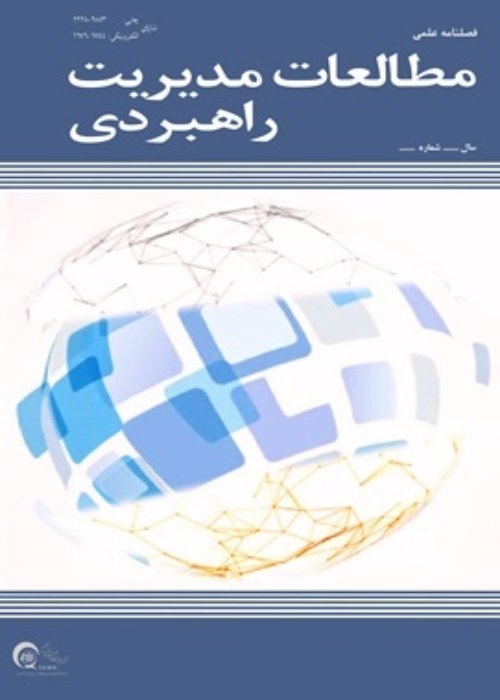A strategic investigation of herding behavior between crude oil market and the tehran stock exchange
Author(s):
Article Type:
Research/Original Article (دارای رتبه معتبر)
Abstract:
Introduction
The stock market is one of the most important and influential segments of the financial market in any economy [1]. This market reflects the economic situation of countries because one of its functions is to collect capital and transfer it to individuals and companies seeking investment. In addition, the capital market is one of the most important pillars for financing. The stock returns of listed companies can be affected by various factors. Changes in oil prices can be considered as one of the important factors affecting the stock market. Oil-exporting countries, of which oil is an important source of income, are affected by the fluctuation of the price of this black gold, their economy is affected more than other countries, and also their budgets, which often rely on oil prices, are affected in this regard. In countries such as Iran, where their main source of income comes from oil sales and whose budgets rely heavily on oil, the impact of oil price fluctuations on various sectors of the economy has been a concern for policymakers and economists. One of the most important sectors is the stock market, where economic developments and oil prices are increasingly being considered by researchers to make the relationship between the two more obvious over time. Accordingly, the purpose of this study is to investigate the relationship between the herding of the crude oil market and the Tehran Stock Exchange.Methodology
In the study of herding behavior, financial literature is divided into two main branches: The first branch of measures of herding behavior based on efficiency dispersion [2]. The second proposal is a statistical criterion based on analysts' transactions [3]. In this study, based on the approaches of Christie and Huang (1995), the herding behavior between the stock market (with the index of the top 50 companies of the Tehran Stock Exchange) and the crude oil market has been investigated.Christie and Huang (1995) presented the standard deviation of the CSSD cross-sectional study as a model of herding behavior. Their model is as follows: where N is equal to the number of securities that make up the market index, is equal to the return on securities i in period t, is equal to the average yield of N securities from the market portfolio for day t. If there is herding behavior in securities, then the dispersion will be low. In fact, because herding behavior tends to follow market trends (ascending or descending), securities follow market trends and thus dispersion decreases. Christie and Huang (1995) model believes that herding behavior occurs more during intense market movements (ups and downs).Results and Discussion
The results show that the regression coefficient of the square market return is negative and statistically significant. The existence of a negative coefficient for the stock market and crude oil market returns indicates the reduction of deviations of companies' returns from market returns during the market turmoil (increasing or decreasing). Reducing the deviations of companies' returns from market returns means the existence of herding behavior in the market.Also, in examining the existence of herding behavior in a reciprocal manner, the results of examining the hypothesis of the existence of reciprocal herding behavior in the stock market and crude oil market in the stock market are confirmed. The existence of a negative square coefficient for the variable market return indicates a decrease in the deviations of companies' returns from market returns, when the cross-market, i.e. oil or stock market, is fluctuating. Thus, the hypothesis of the existence of reciprocal herding behavior in the stock market is confirmed. The results of this section are similar to the research of Balcilar, Demirer [4], Gong and Dai [5], and Mabrouk [6].Conclusion
This study investigates the reciprocal herding behavior between the stock market and the crude oil market in Iran. The results of the herding behavior indicate the existence of herding behavior among the top 50 companies on the Tehran Stock Exchange and the OPEC oil market between 2011 and 2019. The results of the study based on two criteria explaining herding behavior, confirmed the existence of herding behavior between the top 50 listed companies and the OPEC crude oil market. The results also show that the relationship between the herding behavior of investors is reciprocal between these two markets.Language:
Persian
Published:
Journal of Strategic Management Studies, Volume:14 Issue: 55, 2023
Pages:
229 to 246
magiran.com/p2646529
دانلود و مطالعه متن این مقاله با یکی از روشهای زیر امکان پذیر است:
اشتراک شخصی
با عضویت و پرداخت آنلاین حق اشتراک یکساله به مبلغ 1,390,000ريال میتوانید 70 عنوان مطلب دانلود کنید!
اشتراک سازمانی
به کتابخانه دانشگاه یا محل کار خود پیشنهاد کنید تا اشتراک سازمانی این پایگاه را برای دسترسی نامحدود همه کاربران به متن مطالب تهیه نمایند!
توجه!
- حق عضویت دریافتی صرف حمایت از نشریات عضو و نگهداری، تکمیل و توسعه مگیران میشود.
- پرداخت حق اشتراک و دانلود مقالات اجازه بازنشر آن در سایر رسانههای چاپی و دیجیتال را به کاربر نمیدهد.
In order to view content subscription is required
Personal subscription
Subscribe magiran.com for 70 € euros via PayPal and download 70 articles during a year.
Organization subscription
Please contact us to subscribe your university or library for unlimited access!


